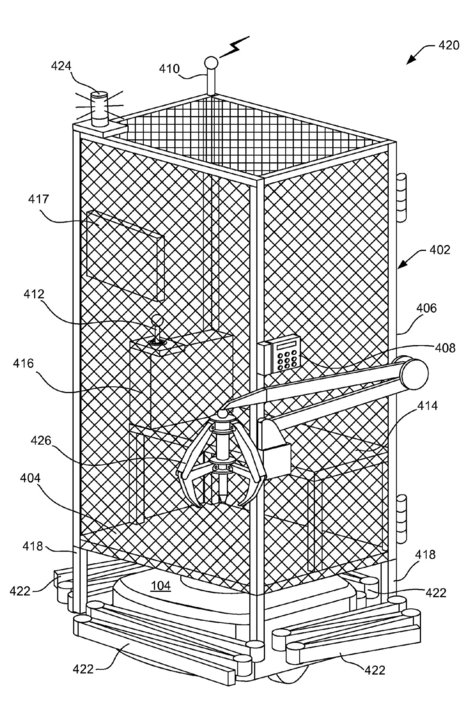
Amazon’s Unused Patent Put People in Safety Cages
An Amazon patent granted by the U.S. Patent and Trademark office in 2016 pairs humans and machines in the workplace–or rather keeps them separated by putting humans in protective areas. Illustrations with the patent show a cage-like enclosure around a small work space sitting atop the kind of robotic trolleys that now drive racks of shelves around Amazon warehouses. Called “an extraordinary illustration of worker alienation, a stark moment in the relationship between humans and machines” by researchers, it was featured in a recent study.
Amazon never implemented the technology and says it has no plans to, but the design appeared to be an effort to allow humans to safely enter robot-only zones in Amazon’s highly-automated depots to make repairs or pick up dropped objects. If an unauthorized human strays into the robot-only zone, it triggers an alarm and the devices are designed to shut down to avoid colliding with the person. Amazon, in its patent, suggested a way around that firm boundary between human and robot territory.
“There may be circumstances where it is necessary for human operators to traverse, or otherwise go into, an active work space,” says the patent, which credits eight inventors in the Boston area, home of Amazon Robotics, which was formed through the acquisition of Kiva Systems in 2012.
Still, the company’s patents often spark conjectures about Amazon’s technology and business plans. Other Amazon patents have mulled using wristbands to track workers’ hand movements, dropping packages from drones 25 feet in the air, or having drones themselves link up to form a kind of floating warehouse.
Matt Day and Benjamin Romano wrote the article for the Seattle Times highlighting these far-out concepts. The story describes what Henry Ford did to modernize the production line in his factories all those years ago, comparing it to efforts now to more effectively run operations.
read more at the seattletimes.com







Leave A Comment